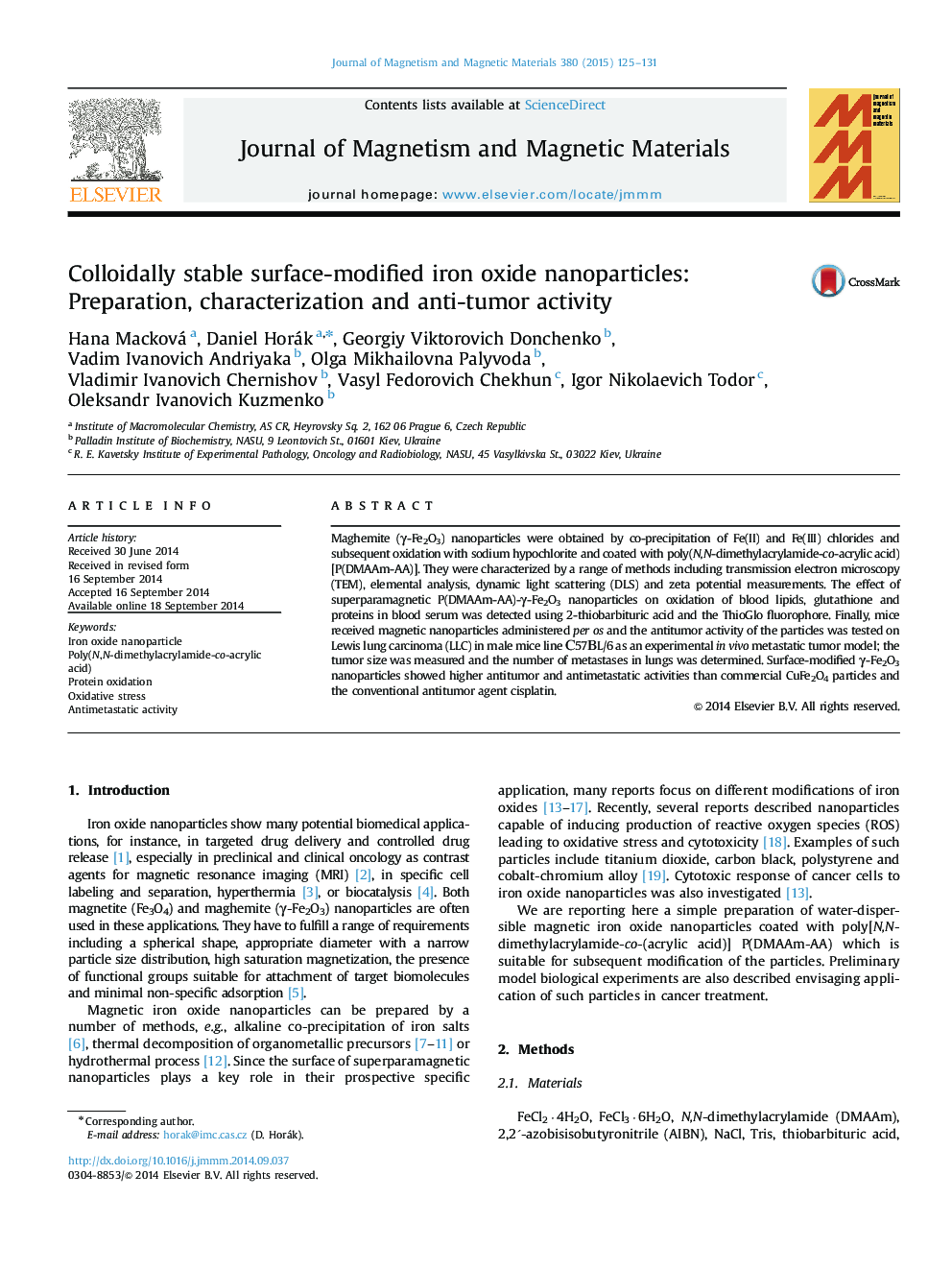| Article ID | Journal | Published Year | Pages | File Type |
|---|---|---|---|---|
| 1798867 | Journal of Magnetism and Magnetic Materials | 2015 | 7 Pages |
Abstract
Maghemite (γ-Fe2O3) nanoparticles were obtained by co-precipitation of Fe(II) and Fe(III) chlorides and subsequent oxidation with sodium hypochlorite and coated with poly(N,N-dimethylacrylamide-co-acrylic acid) [P(DMAAm-AA)]. They were characterized by a range of methods including transmission electron microscopy (TEM), elemental analysis, dynamic light scattering (DLS) and zeta potential measurements. The effect of superparamagnetic P(DMAAm-AA)-γ-Fe2O3 nanoparticles on oxidation of blood lipids, glutathione and proteins in blood serum was detected using 2-thiobarbituric acid and the ThioGlo fluorophore. Finally, mice received magnetic nanoparticles administered per os and the antitumor activity of the particles was tested on Lewis lung carcinoma (LLC) in male mice line С57ÐL/6 as an experimental in vivo metastatic tumor model; the tumor size was measured and the number of metastases in lungs was determined. Surface-modified γ-Fe2O3 nanoparticles showed higher antitumor and antimetastatic activities than commercial CuFe2O4 particles and the conventional antitumor agent cisplatin.
Related Topics
Physical Sciences and Engineering
Physics and Astronomy
Condensed Matter Physics
Authors
Hana Macková, Daniel Horák, Georgiy Viktorovich Donchenko, Vadim Ivanovich Andriyaka, Olga Mikhailovna Palyvoda, Vladimir Ivanovich Chernishov, Vasyl Fedorovich Chekhun, Igor Nikolaevich Todor, Oleksandr Ivanovich Kuzmenko,
